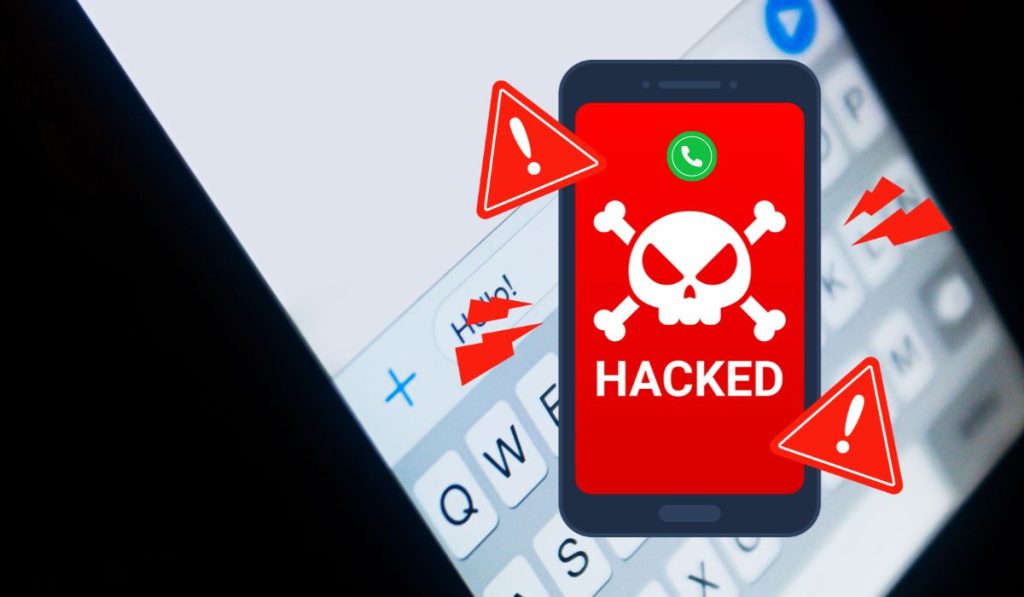How to Check If Someone Is Using Your WhatsApp Account
4 min read
WhatsApp is one of the most popular messaging apps globally, but like any online platform, it’s not immune to security risks. If you’re concerned that someone may be using your WhatsApp account without your permission, there are several steps you can take to check and secure your account. In this guide, we’ll walk you through how to find out if someone is using your WhatsApp account and what you can do to protect it.
Signs That Someone May Be Using Your WhatsApp Account
Before jumping into the specific steps to verify if someone is using your account, it’s important to recognize the warning signs. Here are some clues that may suggest unauthorized access:
- Messages You Didn’t Send: If you notice messages being sent from your account that you didn’t write, this is a clear red flag that someone else may be using your WhatsApp.
- Unusual Activity: Seeing messages or chats you don’t recognize, or if contacts tell you they received strange messages from your account, it’s possible someone else has gained access.
- Frequent Logouts: WhatsApp doesn’t usually log users out unless there’s a change in the device or number associated with the account. If you find yourself being logged out frequently, it’s worth investigating.
- New Devices: If you receive a notification that a new device or WhatsApp Web session has connected to your account, this could indicate unauthorized access.
How to Check If Someone Is Using Your WhatsApp
If you’re concerned that your WhatsApp account might be compromised, follow these steps to verify if someone else is using your account:
1. Check for WhatsApp Web Sessions
WhatsApp Web allows you to use WhatsApp on your computer by scanning a QR code with your phone. If someone gains access to your phone, they could use this feature to monitor your messages remotely. Here’s how to check:
- Open WhatsApp on your phone.
- Tap the three dots (menu) in the top-right corner (for Android) or go to Settings (for iPhone).
- Select Linked Devices.
- This will show you a list of all devices connected to your WhatsApp account via WhatsApp Web. If you see any unfamiliar devices, that means someone could be spying on your conversations.
- Log out from any unknown sessions by tapping on the device and selecting Log Out.
2. Check for Unauthorized Logins
WhatsApp will send you a notification if your phone number is registered on a new device. If you didn’t receive this notification, but you suspect someone has logged into your account, here’s how you can verify:
- Open WhatsApp and go to Settings.
- Tap Account and then Security.
- Look for the two-step verification feature. If you haven’t set it up, it’s a good idea to do so now. This will ensure that even if someone tries to access your account, they’ll need a PIN.
3. Monitor Active Sessions
WhatsApp keeps track of any sessions running on different devices. If your WhatsApp is active on another phone or device without your knowledge, it will show up here:
- Go to Settings.
- Tap on Linked Devices.
- Review the list of active sessions and log out of any unfamiliar ones.
4. Check for Suspicious Messages or Activity
Review your recent chats and messages for any suspicious activity, like messages you didn’t send, or new group chats you don’t recognize. If you notice any, there’s a chance your account has been compromised.
5. Verify SMS Notifications or Emails
When WhatsApp is activated on a new device, the app sends a verification code via SMS. If you receive this code without requesting it, someone could be trying to access your account. Likewise, check your email for any notifications regarding new logins or security changes to your WhatsApp account.
How to Secure Your WhatsApp Account
If you suspect that someone is using your WhatsApp account, it’s crucial to take immediate steps to secure it. Here’s how:
1. Enable Two-Step Verification

Two-step verification is one of the best ways to secure your WhatsApp account. This feature adds an extra layer of protection by requiring a PIN code in addition to the verification code sent via SMS.
- Go to Settings > Account > Two-Step Verification.
- Tap Enable and follow the instructions to set up a 6-digit PIN.
- You’ll be prompted to enter this PIN anytime you try to register your phone number with WhatsApp again.
2. Log Out of All WhatsApp Web Sessions
Even if you don’t see unfamiliar devices linked to your account, it’s a good idea to log out of all active WhatsApp Web sessions to ensure no one else is accessing your account.
- Go to Settings > Linked Devices.
- Tap Log Out of All Devices.
3. Update Your WhatsApp App
Make sure you’re using the latest version of WhatsApp. Developers constantly release updates to improve security and patch vulnerabilities. Go to your device’s app store and check for updates.
4. Use a Strong Phone Lock
If someone gains physical access to your phone, they could log into your WhatsApp account. Always use a strong passcode, fingerprint, or facial recognition to secure your device and prevent unauthorized access.
5. Contact WhatsApp Support
If you believe your account has been compromised, you can contact WhatsApp support directly for assistance. They can help you recover your account and provide guidance on further securing it.
Conclusion
Keeping your WhatsApp account secure is crucial, especially as online threats continue to evolve. By regularly checking for unauthorized access and using features like two-step verification, you can protect your messages and personal data. If you suspect that someone else is using your account, follow the steps outlined above to check for unauthorized logins and secure your WhatsApp right away.



